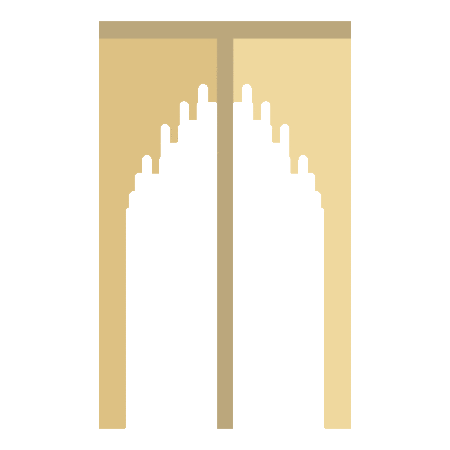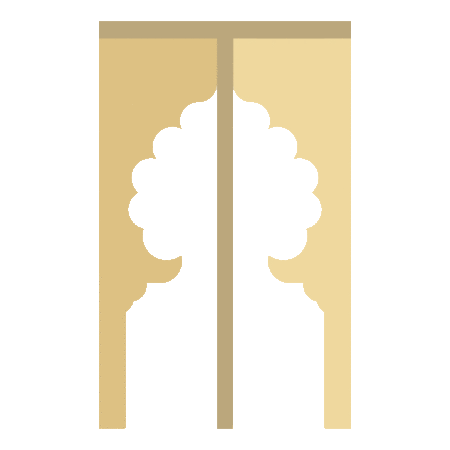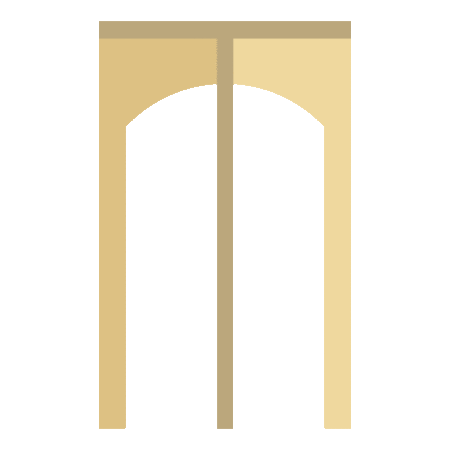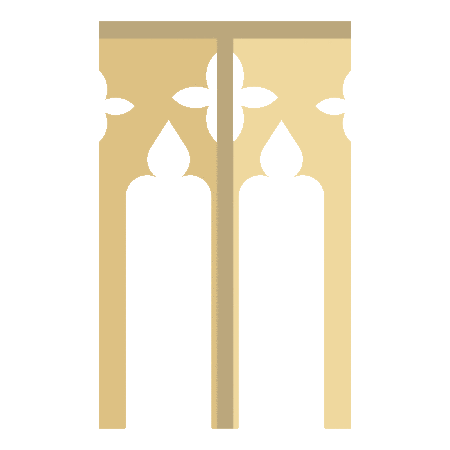About This Arch
Arches can be drawn with a single center such as a Round Arch or with two centers like the Pointed Arch. Other arch constructions use three, four, or the arcs of a higher amounts of circles to create the geometry for an arch.
The four-centered arch is characteristic of Islamic Architecture appearing across the Abbasid, Persian, and Mughal empires. The arch geometry can be varied through moving the positions of the four original construction circles/centers that change how pointed or depressed the final arch will be. The Taj Mahal is a famous example of the four-centered arch.
The Tudor Arch built in England during the Tudor period (1485–1603) is a depressed four-centered arch that is flatter than Islamic arches.
Photo coming soon

Materials & Process
Material: 18mm (3/4″) Birch Plywood (B/BB)
Process: Machine Cut with CNC Wood Router
Finish: Sanded / Satin Poly
Dimensions
Metric: 280mm x 280mm x 450mm
Imperial: 11.02″ x 11.02″ x 17.71″
The Arch Series
Arches were first used to construct underground tunnels, drainage systems, and to span over windows and doorways. These arches could only support small openings as ancient walls were extremely heavy. Pointed arches were different. They allowed for thinner walls to be constructed due to vertical structural loads being carried more efficiently to the ground. Lighter walls meant more windows that could be taller and wider. Indoor spaces subsequently changed from being very dark to very bright. Arches became more decorative over time as structural concerns were easier to overcome. The thirty-two arches in this collections span thousands of years on all continents. You can easily find several types of arch walking around any major city. Arches provided an essential stepping stone in creating the world we live in today.
































